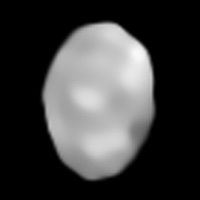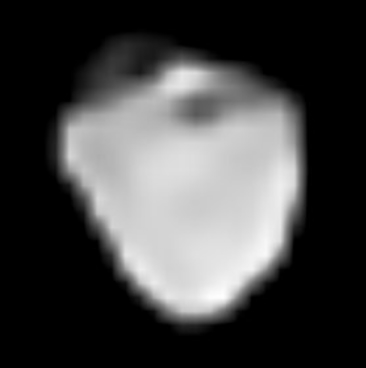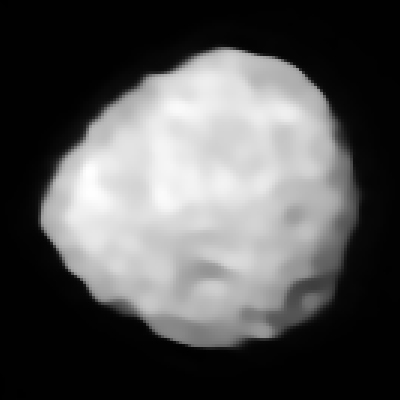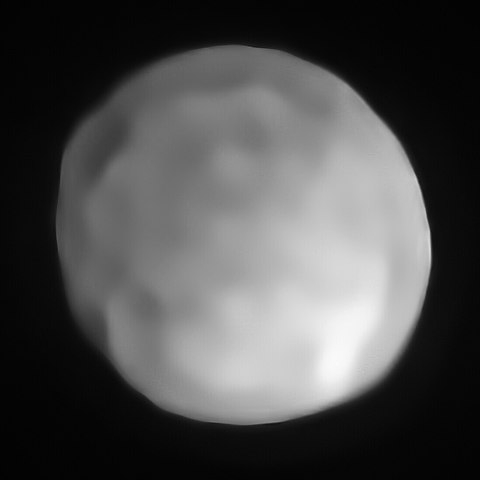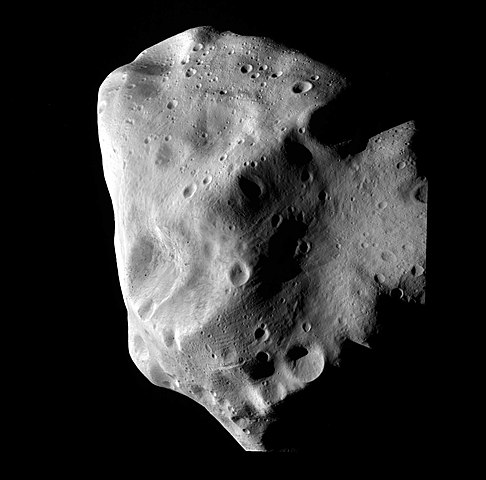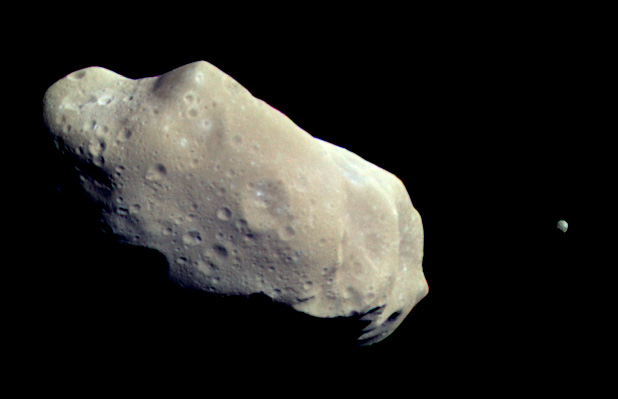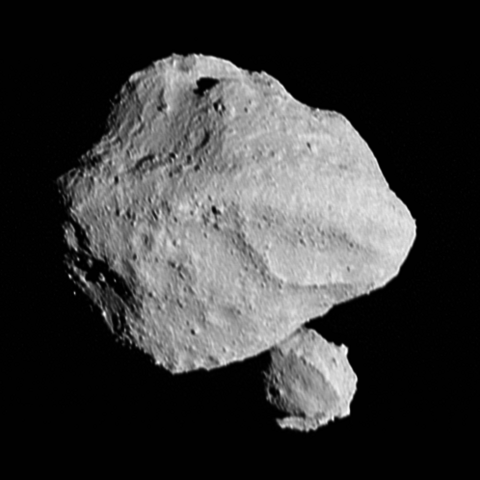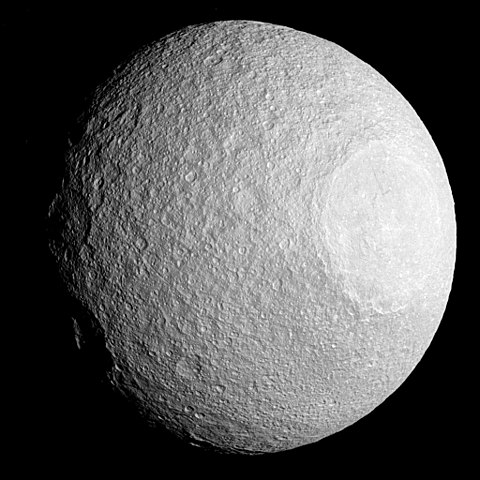1 day / second
0.5 AU
16 Psyche
Asteroid
A massive M-type asteroid between Mars and Jupiter thought to be the exposed iron core of an ancient protoplanet, making it a unique target for NASA's Psyche mission.
Key Facts
orbital regime | Asteroid Belt |
learn more | Wikipedia |
mass | 2.2900e+19 kg |
radius | 111.5 km |
hill radius | 59,273 km |
semi-major axis | 2.922 AU |
eccentricity | 0.134 |
inclination | 3.097º |
longitude of the ascending node | 150.019º |
argument of periapsis | 229.589º |
orbital period | 4.996 years |
surface gravity | 0.013 g |
spacecraft mission | NASA launched a mission to Psyche on October 13th, 2023, expected to arrive in 2029 |
estimated value | Estimated $10,000 quadrillion due to size and metallic composition |
material composition | Believed to be mainly iron and nickel |
discovery date | March 17, 1852 |
discovered by | Annibale de Gasparis at Astronomical Observatory of Capodimonte |
name origins | Named after Psyche, a figure from Greek mythology |
dimensions | 222 kilometers in diameter |
albedo | 0.12 |
material composition | M-type metallic asteroid |
density | 4 g/cm³ |
Gallery


Spacecraft Visits
Psyche
Orbiter
Launched in 2023, planning to enter orbit in 2029
The Psyche spacecraft will spend 26 months orbiting and studying asteroid 16 Psyche starting in 2029, investigating whether this massive M-type asteroid is the exposed nickel-iron core of an ancient protoplanet.
